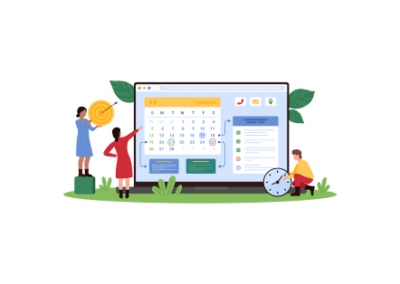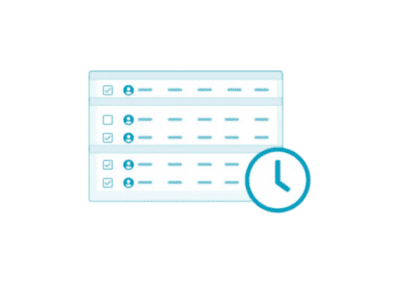This eBook is also available to download.
Challenges in Library Workforce Management: An Overview
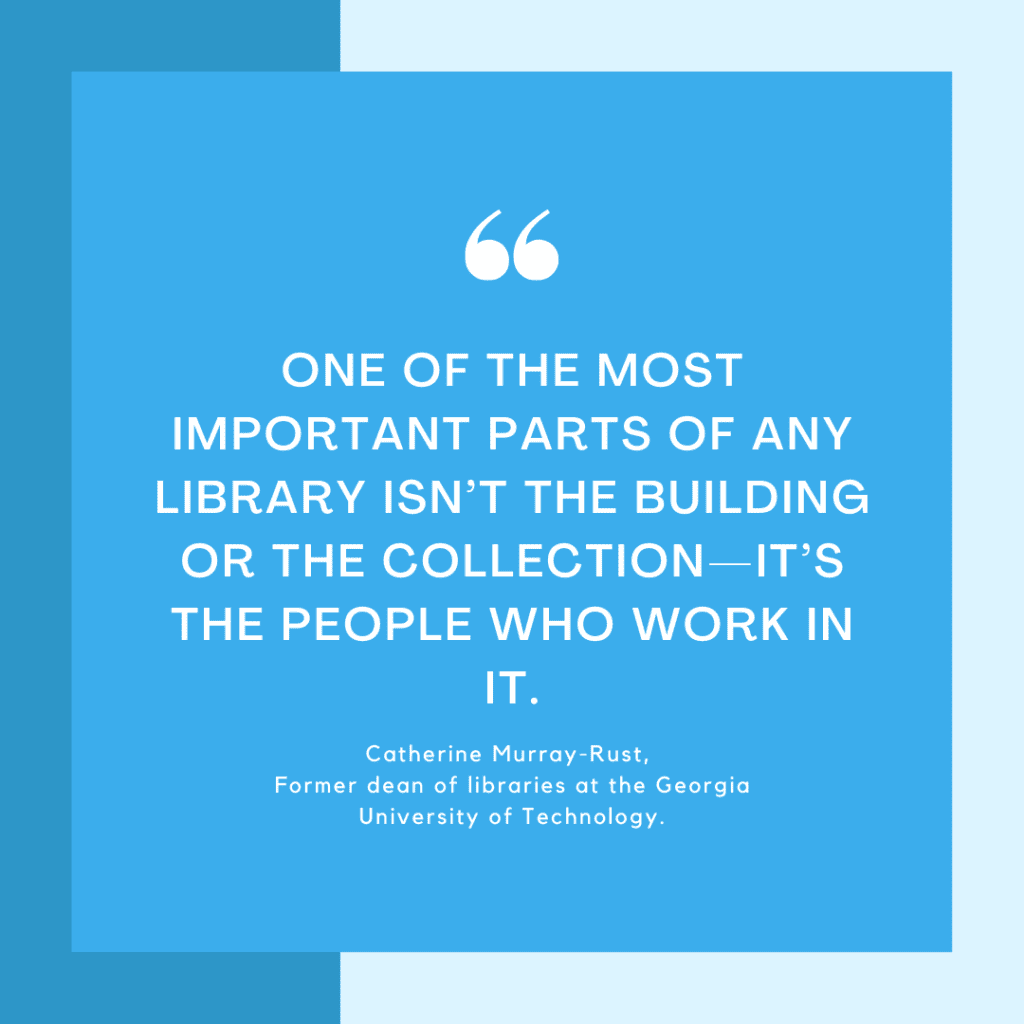
Throughout history, public libraries have played a crucial role in helping people find their first jobs and develop the skills they need to succeed in the workforce. The library provides access to job listings and offers training and education programs. Libraries also serve as a resource for individuals seeking career guidance and support.
However, despite the importance of public libraries in workforce development, there is a concerning trend of global leaders needing to pay attention to their potential impact. While there is a growing emphasis on preparing America’s labour force for the future and ensuring that individuals have the skills they need to succeed in the 21st-century economy, public libraries are often left out of these conversations.
This oversight is particularly troubling, given the vital role that public libraries can play in supporting workforce development. Public libraries are uniquely positioned to provide access to resources and support services that can help individuals navigate the complex landscape of job searching and career development. So, In the digital age, why have public libraries, one of the most accessible places for the public, become so quiet? (and not for good reasons)
Challenges Facing Libraries in the Digital Age
Emerging Technologies and Their Potential Impact on Libraries and the Workforce
Libraries have long been a cornerstone of our communities, providing access to knowledge, resources, and educational opportunities. However, the rise of digital technologies has presented significant challenges for libraries and opportunities for innovation and transformation. As technology continues to evolve rapidly, libraries face the challenge of staying up-to-date and adapting to changing user needs. Here are some emerging technologies that are likely to have a significant impact on libraries in the coming years:
Virtual Reality and Augmented Reality
Virtual reality (VR) and augmented reality (AR) have the potential to transform the way libraries provide access to information and offer educational experiences. For example, libraries can use VR to create immersive learning environments that transport users to historical events or distant locations. Similarly, AR can be used to provide interactive and engaging experiences for users. However, implementing these technologies does have challenges, including:
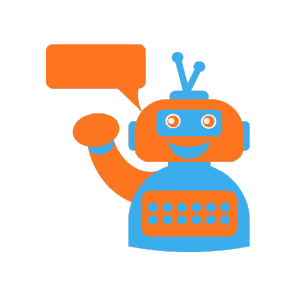
- Significant investment in equipment and training is required to implement these technologies.
- Creating immersive learning environments may require partnerships with other organizations or experts.
- Ensuring that the content and experiences offered through VR and AR are accessible to all users, including those with disabilities.
Artificial Intelligence and Machine Learning
Artificial intelligence (AI) and machine learning (ML) can help libraries improve how they organize and manage their collections and provide personalized recommendations to users. For example, a library can use ML algorithms to analyze users’ reading habits and suggest books they may enjoy. Similarly, AI can automate routine tasks like cataloging and inventory management. However, these technologies also raise concerns such as:
- Concerns about privacy and bias must be addressed in implementing these technologies.
- Libraries may require additional resources or expertise to develop and deploy AI and ML systems.
- Users may need to be more confident in trusting AI-powered recommendations and prefer more human-driven approaches to information seeking.
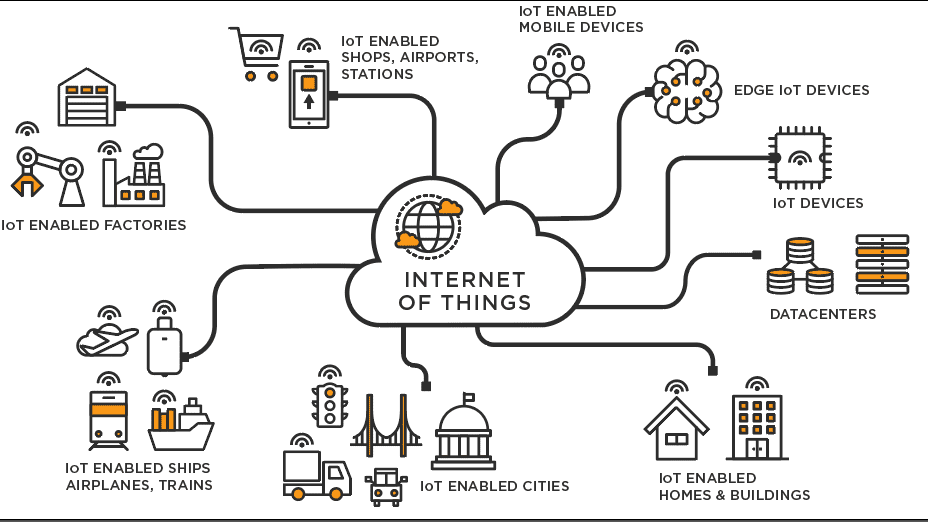
Internet of Things (IoT)
The Internet of Things (IoT) refers to the network of devices connected to the Internet and can communicate with each other. IoT devices can help libraries monitor and manage their physical spaces and offer new services to users. For example, a library can use sensors to track which areas are most frequently used and adjust its resources accordingly. Similarly, IoT devices can provide real-time information about the availability of resources and services. However, implementing these devices requires careful considerations, including:
- Ensuring user data and information security and privacy is a crucial challenge with IoT devices.
- Libraries may need to invest in additional infrastructure and IT expertise to support the deployment of IoT devices.
- Users may be skeptical of the value of IoT devices in the library context and may not see them as essential to their library experience.
Impact of E-Books on the Library Industry
E-books have significantly changed how libraries provide access to books and other resources. Here are some key challenges and opportunities presented by e-books:
Convenience and Flexibility
E-books offer greater convenience and flexibility for users, as they can be accessed from anywhere at any time. This could increase access to information and resources, particularly for those unable to visit physical libraries.

However, while e-books and online resources offer convenience and flexibility, they also reduce the cultural importance of libraries as physical spaces. Libraries have historically served as community gathering places and centers for cultural events, such as author readings, book clubs, and exhibits. The shift towards digital resources can diminish libraries’ role as cultural institutions and decrease the sense of community and shared experience they provide.
Libraries have long been critical social spaces, providing opportunities for people to connect with others, exchange ideas, and engage in civic life. However, the convenience of online resources and e-books can reduce social interactions and diminish the sense of community provided by libraries. Studies have shown that e-books and online resources can decrease social interaction and isolation. For instance, a study on Internet paradox suggested that internet use among teenagers is likely to reduce family communication by 8%, and they are 15% more likely to report signs of loneliness.
Digital Rights Management and Preservation
E-books raise concerns about digital rights management (DRM) and the long-term preservation of digital materials. DRM can restrict access to materials and prevent libraries from providing equitable access to knowledge. Similarly, preserving digital materials requires ongoing maintenance and updates to ensure they remain accessible and usable over time.
Limitations on Access
One key challenge facing libraries is the recent decision by publisher Macmillan to limit the number of e-books that libraries can purchase for their collections. This policy restricts access to information and undermines the mission of libraries to provide equitable access to knowledge.
Physical Health
The use of e-books and online resources can also have negative impacts on physical health. Reading on digital devices like smartphones and tablets can lead to eye strain, headaches, and disrupted sleep patterns. Additionally, prolonged use of digital devices can contribute to developing myopia (short-sightedness) in children and adolescents.

Reading physical books in libraries can benefit physical health, such as reducing eye strain and improving posture. Unlike reading on digital devices, reading physical books in libraries does not involve looking at a screen, which can cause eye strain and headaches. Additionally, reading physical books in libraries may encourage better posture, as readers are likelier to sit in chairs designed for reading rather than slouching on a couch or bed.
- A study published in the Journal of Physical Therapy Science in 2017 found that using a tablet device for reading caused significantly more neck flexion, lower arm flexion, and wrist extension than reading a physical book.
- Another study published in the journal Applied Ergonomics in 2023 found that reading on digital devices was associated with higher levels of discomfort in the neck, shoulders, and upper back than reading print materials.
In addition to these studies, anecdotal evidence from library patrons suggests that reading physical books in libraries can offer a more comfortable and ergonomic reading experience. For example, a survey by the Los Angeles Public Library in 2017 found that many patrons preferred reading physical books because of the comfortable seating, quiet atmosphere, and lack of distractions from digital devices.
Overall, while reading physical books in libraries may not be as convenient as using digital resources, it can offer benefits for physical health and a more comfortable reading experience.
Challenges Facing Library in Staffing
Libraries face many challenges in the digital age, including staffing. As libraries continue to evolve and adapt to changing technologies and user needs, the roles and responsibilities of librarians are also growing. In this section, we discuss the challenges encountered by academic library staff regarding processing requested information resources, utilizing senior librarians, and recruiting new ones. We will also explore the new roles that librarians are taking on in response to these challenges.
Challenges in Processing Requested Information Resources:
One of the main challenges facing academic libraries is processing requested information resources. In many cases, librarians are responsible for acquiring, cataloging, and making accessible a wide range of resources, including books, journals, databases, and multimedia materials. This process can be time-consuming and labour-intensive, especially given the vast information available in the digital age.
According to a recent study, academic library staff face various challenges in processing requested information resources. This includes limited staffing, inadequate funding, and a lack of training in emerging technologies. These challenges can lead to delays in processing resources, which can negatively impact the user experience.
Utilizing Senior Librarians:
Another challenge facing libraries in staffing is the effective utilization of senior librarians. As experienced professionals, senior librarians have a wealth of knowledge and expertise that can be invaluable in the digital age. However, they may also resist change or need to gain the necessary skills to navigate new technologies.
According to a study, libraries must proactively engage and retain senior librarians while ensuring they have the necessary training and support to stay up-to-date with emerging technologies. This can involve providing ongoing training and professional development opportunities and creating a culture of innovation and openness to change.
Recruiting New Librarians:
Finally, libraries also need help recruiting new librarians. As librarianship continues to evolve, new roles and responsibilities are emerging that require a diverse range of skills and expertise. However, there may be a perception among some that libraries need to be updated or that they are not as relevant in the digital age.
According to a study, libraries must proactively recruit new librarians by highlighting the diverse range of opportunities and roles available in the field. This can involve partnering with universities and other organizations to promote the librarianship field and highlighting the importance of libraries in promoting information literacy and digital citizenship.
New Roles for Librarians:
In response to these challenges, librarians are taking on new roles and responsibilities that reflect the changing nature of the field. For example, librarians are increasingly becoming involved in data management and curation, helping to ensure that research data is preserved and accessible for future use. They also take on roles in digital scholarship, working with faculty and researchers to create and disseminate new forms of scholarly communication.
Effects of the Pandemic on the Library Industry and Staffing Levels

The COVID-19 pandemic has significantly impacted the library industry and staffing levels. With many libraries closing their physical doors to the public, librarians have had to rapidly adapt to providing virtual services and resources. This has placed a greater emphasis on digital skills and the use of technology in delivering library services.
Challenges
One of the main challenges libraries faced during the pandemic was the need to transition to remote work and virtual services quickly. In a survey of academic libraries conducted by the Association of College and Research Libraries, 83% of respondents reported transitioning quickly to remote work in response to the pandemic. This sudden shift required librarians to be proficient in digital communication tools and quickly adapt to new technologies to provide services remotely.
Another challenge facing libraries during the pandemic has been the increased demand for digital resources. With physical libraries closed, many users have turned to online resources such as e-books and online databases. This has strained library budgets and staffing levels, as librarians have had to acquire and manage these resources and provide virtual services.
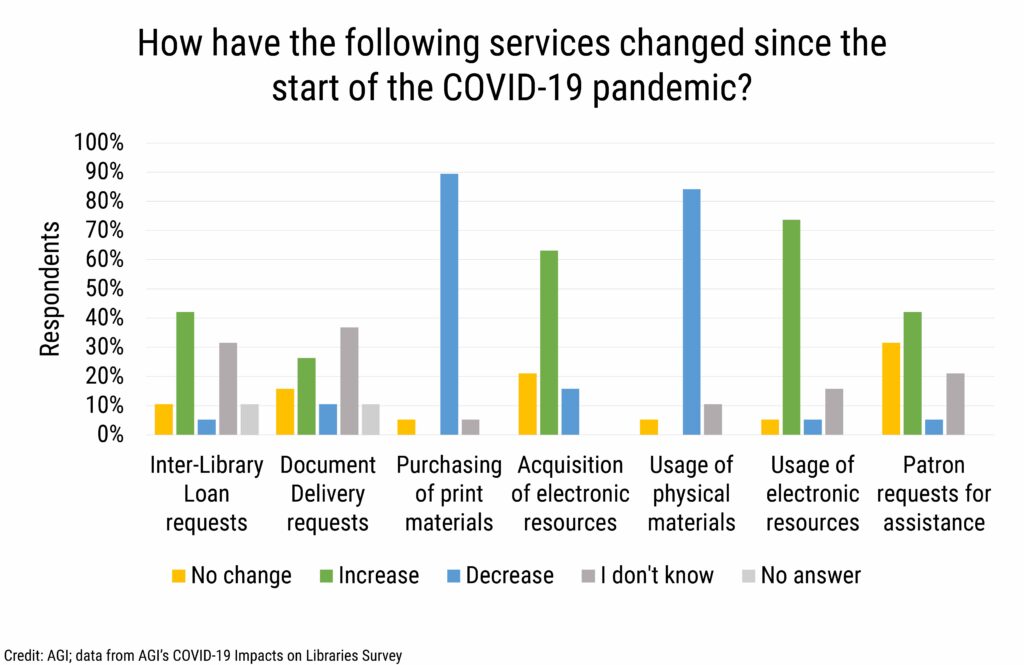
Opportunities
Despite these challenges, the pandemic has also created opportunities for libraries to demonstrate their value and adaptability. For example, some libraries have used virtual programming to reach new audiences and expand their services beyond physical locations. Additionally, the pandemic has highlighted librarians’ vital role in promoting information literacy and digital citizenship, as users have had to navigate the flood of information related to the pandemic.
To meet the challenges posed by the pandemic, librarians must continue to develop their digital skills and embrace new technologies. This includes technical skills such as proficiency with digital communication tools and the ability to curate and manage online resources effectively. As the pandemic continues to evolve and the library industry adapts to new norms, the importance of these skills is likely only to increase. Our next section will discuss creating an effective workforce management strategy for your library!
Creating an Effective Workforce Management Strategy for Library
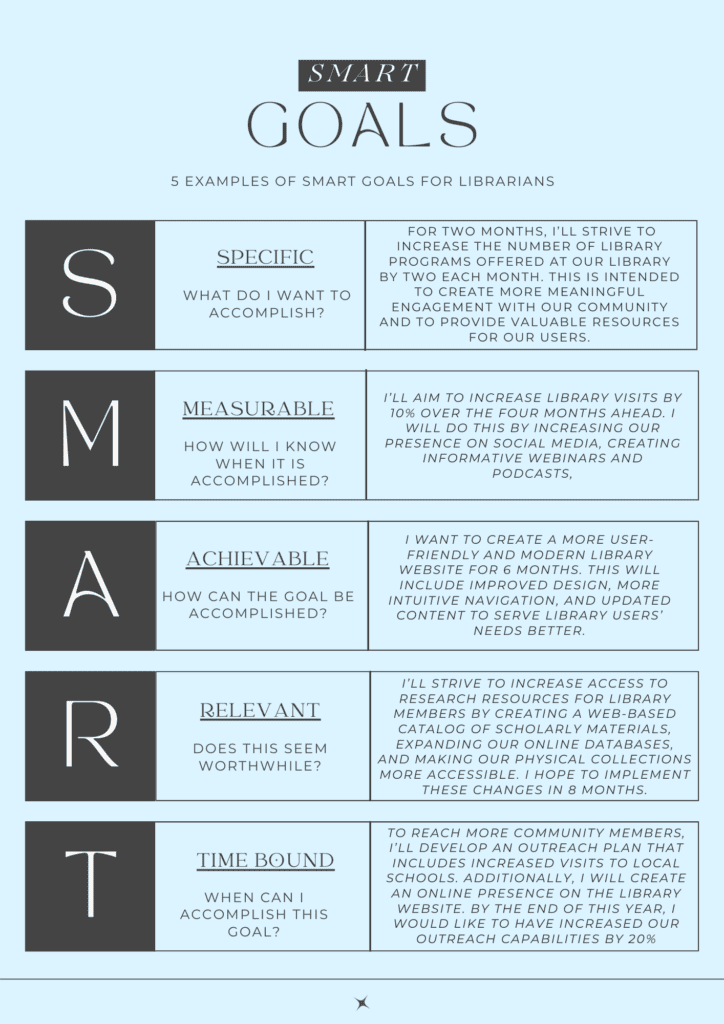
Workforce management is critical for libraries to ensure their staff is effectively utilized, motivated, and engaged in delivering library services. A well-designed workforce management strategy helps libraries to identify and manage staffing needs, set goals, and track performance metrics. This section discusses the critical components of libraries’ effective workforce management strategy.
Assessing your library’s workforce needs:
To develop an effective workforce management strategy, it is essential to assess the staffing needs of your library. This involves understanding the types of roles and responsibilities required to meet the library’s service objectives. Libraries should assess their staffing needs based on factors such as the size and complexity of the library, the number of users, and the library’s budget.
Setting goals for workforce management:
Once you have assessed your library’s workforce needs, you should set goals for workforce management. Goals should be specific, measurable, achievable, relevant, and time-bound (SMART). For example, a library’s workforce management goals include reducing turnover, increasing employee engagement, and improving customer service.
Identifying key performance indicators:
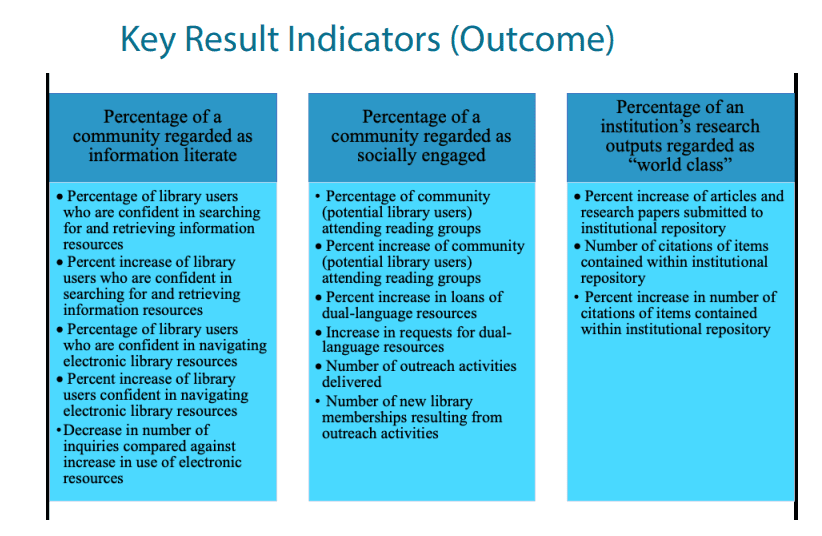
Identifying key performance indicators (KPIs) to track progress toward your workforce management goals is essential. KPIs are metrics that help libraries to measure and evaluate the performance of their workforce management strategies. Here are some KPIs that libraries can use to measure the effectiveness of their workforce management strategy:
- Staffing levels: This KPI measures the number of staff members a library has on its payroll. This KPI is important because it helps libraries determine whether they have enough staff to meet their users’ needs.
- Employee turnover rate: This KPI measures the number of employees who leave a library over a specific period. High turnover rates can indicate poor workforce management practices or other underlying issues that need to be addressed.
- Employee engagement: This KPI measures employees’ engagement level with their work and the library’s mission. Engaged employees are more likely to be productive, provide better service, and stay with the library for extended periods.
- Service quality: This KPI measures a library’s service quality to its users. Libraries can use customer satisfaction surveys, feedback forms, or other tools to gather data on this KPI.
- Efficiency: This KPI measures how efficiently a library uses its resources to provide services. It includes metrics such as the number of items processed per hour, the number of requests handled per staff member, and the cost per transaction.
By tracking these KPIs, libraries can better understand their workforce needs and performance and adjust their workforce management strategies accordingly.
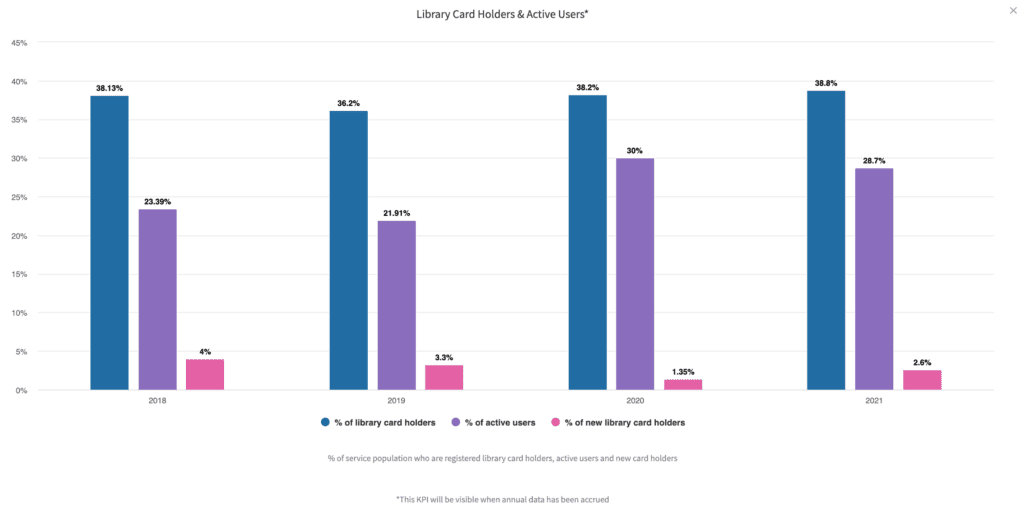
Identifying the Industry’s main pain points:
Managing library employees can be challenging due to the diverse nature of their workforce, including full-time, part-time, student, and volunteer staff. Additionally, libraries must comply with many rules and regulations, making managing staff schedules and shifts challenging.
Libraries often need help to notify employees about shifts, which can cause scheduling conflicts and reduce employee satisfaction.
Furthermore, library employees may have little autonomy over their schedule, leading to increased stress and burnout. Lastly, a significant amount of time is wasted on administrative tasks, such as managing time-off requests, tracking hours worked, and maintaining employee records.
Managing Library Staff with Scheduling Software
Managing a library requires a lot of effort and resources, and one of the biggest challenges library managers face is scheduling and managing their staff. Creating a schedule that meets the library’s and its staff’s needs can be challenging with limited resources. Fortunately, employee scheduling software like Celayix can help simplify the process and ensure your library is staffed appropriately.

Using scheduling software to create schedules and track employee time
One of the most significant advantages of employee scheduling software is creating schedules quickly and easily. With just a few clicks, you can create a schedule that meets your library’s and its staff’s needs. Additionally, scheduling software can help you manage employee time more efficiently, reducing the need for manual tracking and paperwork.
Managing absences and time off requests with scheduling software
Scheduling software can also help you manage absences and time off requests more efficiently. With features like automatic notifications, you can quickly identify when employees are absent or have requested time off and adjust the schedule accordingly. Additionally, scheduling software can help you track employee leave balances, ensuring that your employees are taking time off they are entitled to.
Communicating with staff and improving collaboration
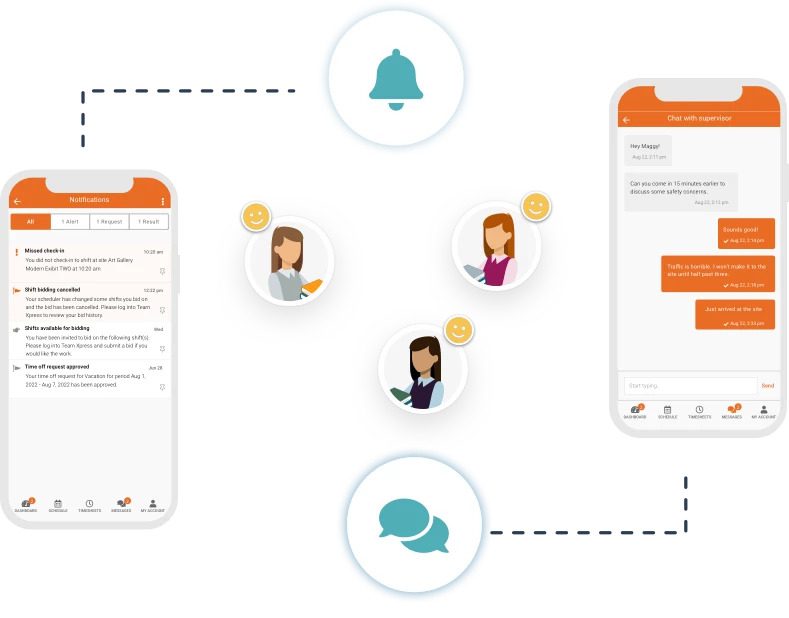
Effective communication is essential for successful staff management. Scheduling software can help improve collaboration by providing a centralized platform for communication. With features like shift swapping and messaging, employees can easily communicate with each other and the manager, making it easier to resolve scheduling conflicts and stay updated with changes.
Best Practices for Staff Scheduling in Libraries
Creating Schedules that Meet the Needs of Your Library and Staff
One of the most important aspects of staff scheduling is creating schedules that meet the needs of your library and staff. Consider factors like employee availability, workload, and preferences when creating schedules. You can also use employee scheduling software to create templates that can be easily modified to fit the needs of the library and staff. These templates can be saved and reused to save time and effort.
Communicating with Staff about Schedules and Changes
Clear communication is essential for successful staff scheduling. Communicate the schedule to staff well in advance and notify them promptly of any changes. Scheduling software can automate this process, reducing the need for manual notifications and ensuring that employees are always up to date with the schedule.
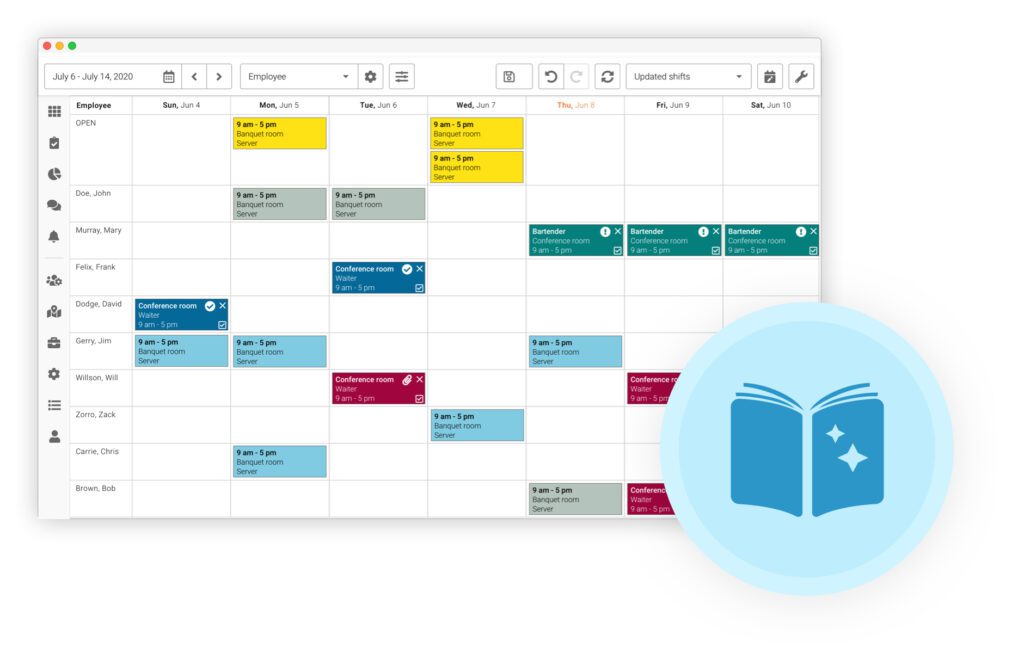
Managing Time Off Requests and Absences
Time off requests and absences can be challenging, especially in libraries with limited staff. Scheduling software can help you manage these requests more efficiently by providing a centralized platform for employees to request time off and for managers to approve or deny those requests. Additionally, scheduling software can help you track employee leave balances, ensuring that your employees are taking time off they are entitled to.
Celayix’s other features
Celayix offers several features that can help libraries manage their staff more efficiently, including:
Rules Engine:

- Automates scheduling rules, reducing the need for manual adjustments.
- Offers pre-defined rules, such as seniority-based, availability-based, and skill-based scheduling.
- Allows customization and combination of rules to create unique scheduling criteria based on business needs.
- Provides flexibility to create shift patterns and modify or override existing rules as needed.
Shift notifications:
- Sends automatic notifications to employees, reminding them of their upcoming shifts.
- Allows the user to send notifications through Schedule Xpress.
- Sends notifications as Team Xpress app notifications and can be sent as email and SMS if the employee consents to receive them.
Self-scheduling:
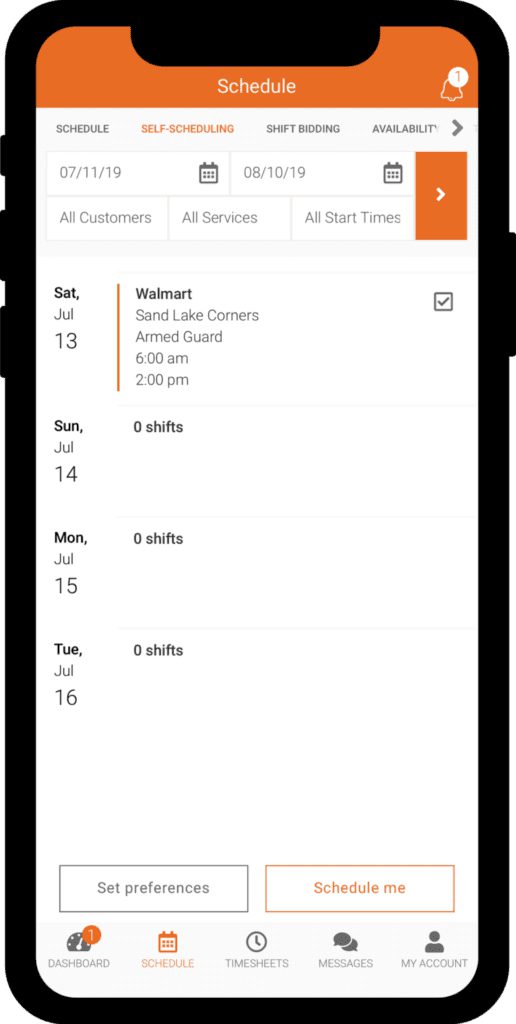
- It begins with the user creating a range of open shifts and marking them as self-scheduling shifts to ensure they can be picked up.
- Allows employees to request and swap shifts, reducing the need for manual scheduling adjustments.
- Enables employees to schedule themselves for shifts they want to work.
Schedule templates:
- Allows for the creation of templates that can be easily modified to fit the needs of the library and staff.
- Enables saving a selection of shifts as templates to paste and repeat in the future.
- Useful for those who expect to have repeated schedules with minimal changes.
- Increases consistency and reduces time spent creating schedules.
Celayix and Genessee District Library: A Success Story
Introduction
Genesee District Library (GDL) is a public library system in Flint, Michigan, serving the residents of Genesee County. It has 19 locations across the county and provides in-person and online library services. Over one million visits are made annually to the GDL for books, movies, music, technology, and programs. With over 150 employees, the library system struggled to manually create staff schedules each week while trying to balance union requirements, staffing needs, and preferences. To address these challenges, the library sought a solution that would merge employee desires and availability with branch needs to come up with optimal employee schedules automatically.
Business Challenge
The manual approach was time-consuming and left room for error. The library risked the chance of a branch not opening on time if vacation was not adequately considered or if one location was double-booked. Kelly Richards, Branch Operations Manager, explained, “It was just taking up too much time. We couldn’t get our work done”.

Solution
In the search for a solution, Richards knew what she wanted: auto-fill capabilities. Celayix was the only solution they found with auto-fill capabilities already built-in. The Celayix team guided the library on conference calls and webinars to establish business rules in the software, such as maximum hours employees can work, types of staff at a branch, and ensuring that an employee with critical privileges is always scheduled at a branch.
Employee Preferences
Celayix combines the library’s requirements with employee preferences. Employees log onto the self-service portal from any computer to enter their availability and time-off requests directly into the software. The scheduling manager uses a schedule template to create a schedule, starting the auto-fill process. The system auto-fills employees into shifts based on the business requirements and the best-fit employee. With the help of the Visual Scheduler, posting a schedule only takes a couple of hours a week compared to no less than 10 hours a week previously.
Rules-Based Engine
Celayix’s rules-based engine helps the Genesee District Library and the employee scheduling process. The library utilizes the auto-fill option to assign staff according to availability preference first. However, the library still has to ensure that the staff scheduled at a branch can open and close the branch.
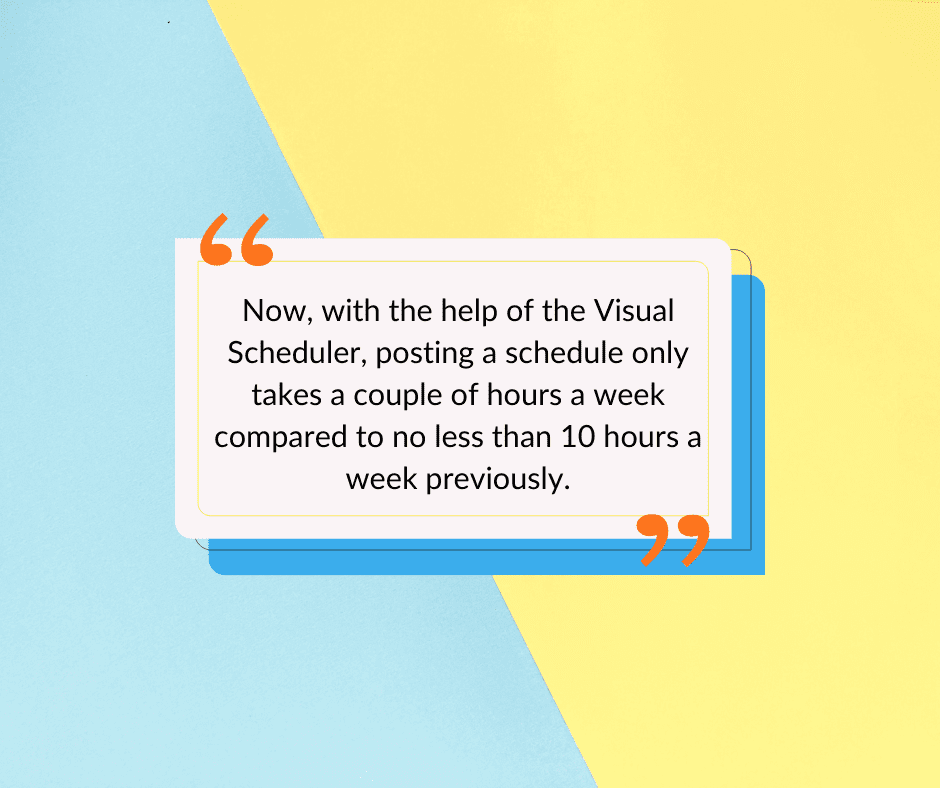
Automated library staff scheduling has made the process faster, fairer, and more error-resistant. The library saves time and resources weekly by creating a post-able employee schedule. Staff can look online to see the current employee schedule and any changes immediately after they occur.
Celayix also allows managers and staff to look at different views of employee schedules. On one, they can see library staffing for an entire branch for an entire week. Another shows just the library assistants. Colour coding on employee schedules gave managers important insight, making it easy to see that every shift had the required, qualified staff.
Celayix enabled schedulers to manage and create schedules for all branches from a single Celayix account. Management could see shift data for the library across all branches or isolate one branch for reporting if necessary. It also made moving employees around different branches much easier when required.
Result I: Efficient and Error-Free Scheduling
Celayix’s automated scheduling software simplified the process, making it more efficient and error-free. With the help of Celayix, the library staff now has more time to focus on other essential tasks, and there is a significant reduction in the risk of double-booking staff or failing to meet union requirements.
Moreover, the new scheduling system made it easier for staff to access their schedules from anywhere, at any time. The self-service portal allows employees to input their availability and time-off requests directly into the software, and they can check their schedules online. The managers and staff can also view different versions of employee schedules with different colour coding, making it easy to ensure that every shift has the required, qualified staff.

Result II: Create multi-location schedules at one-stop
Another advantage of Celayix’s scheduling software is its multi-location scheduling capability, which allows the library to manage and create schedules for all branches from a single Celayix account. This feature made moving employees around different branches easier when required and simplified management reporting across all branches.
In conclusion, Celayix’s automated scheduling software proved to be an essential tool for the Genesee District Library to overcome its challenges of manual scheduling processes. With its rules-based engine, a self-service portal, and multi-location scheduling capability, the library was able to create fairer, more efficient, and more accessible schedules, reducing the risk of errors and saving significant time and resources.
What else can you do: Engaging and Motivating Library Staff
A study by an associate professor from Ohio State University found that when library staff are encouraged by library leadership to participate in professional development, they are likelier to do so. In fact, our research has also shown that library staff who perceived that their library’s leaders recognized and valued their professional skills and competencies had a higher sense of professional self-esteem.
According to our research, 77% of library staff members surveyed agreed that their library leadership encouraged professional development. Moreover, 68% felt that their library valued their professional development. Library leaders can use knowledge management to understand better the knowledge and skills their staff members already possess and to encourage communities of practice and sharing knowledge in the organization. This recognition can result in employees who are happier and more motivated to learn. So how can you engage and motivate your library staff?

As a library leader, your top priority should be to provide regular, real-time communication to your team, particularly if they have little or no experience working from home. Your staff may feel isolated, disconnected from their job, and lonely. When choosing a communication method, be mindful of the message you want to convey. Avoid replacing phone calls with emails when checking in with employees or scheduling another virtual meeting when an email could suffice. Consider the following communication goals and select the most appropriate method to achieve them:
Goal #1: Provide updates and information
Keep your team informed about library happenings. The more informed your employees are, the more engaged they become. For instance, if there has been a recent change in library policy, ensure that your team is aware of it. If another department has achieved excellent customer service, inform your team. Sharing positive feedback from patrons on the library’s collection fosters a sense of community and leadership. Consider weekly updates via email, which the surveyed libraries found to be the most effective communication tool for providing updates and information to their employees. Google Slides and Forms were described as effective methods for creating interactive forms with links to videos and questions. Google Meet and Zoom were the most preferred communication tools for virtual meetings.

Goal #2: Provide instructions and directions
Remote work makes it difficult for employees to check in with their boss face-to-face or read body language. To avoid miscommunication and constant hand-holding when completing projects, consider using a communication platform that everyone is comfortable with. Survey respondents shared that preferred platforms for providing instructions and opportunities for remote collaboration were Basecamp, Google Docs, Slack, Microsoft Teams, SharePoint, Webex, Gimlet, and WebJunction. In addition to virtual meetings via Zoom and Google Meet, these platforms can help remote teams stay productive and efficient.
Goal #3: Provide reassurance and support

Some employees may find working from home stressful and unproductive, especially during lockdowns when libraries were furloughing workers. To maintain pre-COVID engagement levels, library leaders provided communication support through regular monthly and weekly check-ins with their employees. Additionally, non-traditional communication methods such as texting, chat messaging through Facebook, FaceTime, phone calls, and anonymous staff surveys were used to get honest feedback from staff on reopening plans. The Glen Ellyn Public Library set up a department buddy system to ensure everyone had someone checking their well-being. Respondents from Helen Plum Library noted that communicating with each other and focusing on what they could do helped them work through the trauma caused by the pandemic.
Effective communication is essential to motivating and engaging your library staff, especially in a remote work environment. By providing a platform for communication and choosing the right tools for each communication goal, library leaders can maintain a sense of community and support among their teams.
Goal #4: Set clear goals and expectations
Establishing clear goals and expectations for remote work is essential to ensure everyone is on the same page. Communicate your expectations to your team, such as how often you want them to check in with you, whether they should track their time, and their commitments and projects. According to leadership training expert Elizabeth McLeod, the lack of clear expectations is the root cause of poor performance. McLeod emphasizes that leaders should not assume that their expectations are apparent; instead, they should communicate them clearly to their team (Petrone, 2018).

Surveyed respondents had varying expectations, with some expecting daily updates while others were satisfied with weekly briefings. However, all respondents expected their teams to continue with their tasks to some degree, even when they needed to have fully-formed goals for remote work due to the uncertainty of when libraries would reopen to the public. Leadership teams made changes to accommodate work-from-home situations, with virtual programming and continuing education sessions listed as the most common assignments.
Survey Results
In terms of goals and expectations, respondents from Wilmette Public Library and Sycamore Public Library shared their experiences. At Wilmette Public Library, the expectation was to do what could be done, and staff were trusted to work as much as possible in a crisis. Staff members kept up with their duties from home, including translating their in-person programs to virtual ones within two weeks of closing the building. At Sycamore Public Library, staff did weekly check-ins and kept timesheets with notations on continuing education and projects. Staff members were permitted to create their own hours and were expected to work half their regular hours for the first couple of months.
To maintain a healthy balance between work and home life, managers may consider setting specific work hours and being available during those times to address any urgent issues. For instance, managers at Westmont Public Library sent emails with expectations for work, where full-time staff worked half their hours, and part-time staff worked one-third. Each staff member kept a daily work log and had a document of ideas to draw from. Staff members were also asked to check email three days per week for any updates.
Goal #5: Take benefits of remote work if possible
As a leading provider of workforce management solutions, Celayix understands the challenges businesses face when managing a remote workforce. However, we also recognize the benefits that can come with it. Many organizations, including libraries, had to adapt quickly to remote work during the pandemic. Once everyone settled in, the benefits of working remotely became apparent. First and foremost, everyone felt safer. Beyond that, many survey respondents said they realized they did not miss their commute!
The added flexibility to work schedules was also appreciated, as it allowed staff to tend to issues at home, spend more time with their families, and take lunch breaks when they wanted. The newfound flexibility had other benefits, such as improved self-care. One respondent even mentioned that they “appreciated the flexibility to take [their] contractual 15-minute break in watering [their] flowers and petting [their] dog.”
As staff became more comfortable with new technology and communication methods, workflows improved, and staff were able to complete more work in a shorter period. Meetings became more efficient, and staff could focus better on their work without distractions. Some even used this time to learn new technology and identify new services for patrons, making the library more accessible to those who previously could not come.
Conclusion
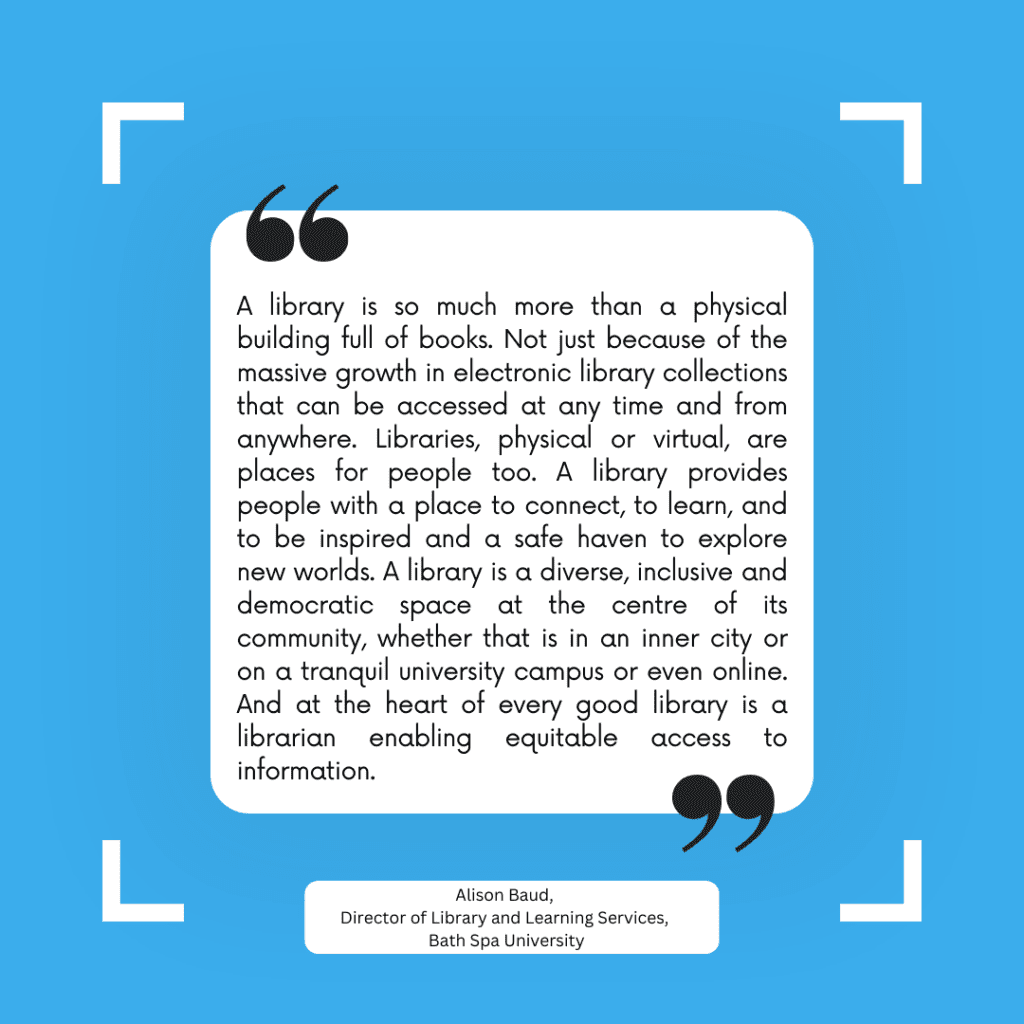
The lines between physical and digital libraries are becoming increasingly blurred. Library professionals are starting to view them as interdependent rather than separate entities. As a result, libraries are moving towards offering both physical and online services in an indivisible manner, making little or no distinction between the two.
Recent developments indicate that libraries are becoming more technology-based and are starting to offer services that cater to both consumers and creators. For example, the government’s “Independent Library Report for England” has recommended that library services provide customers with a national, digital library network and local community hubs centred on free public wifi. Additionally, the Libraries Taskforce has suggested that more “maker-spaces” should be created using technology such as 3D printers.
Libraries are valuable assets for local and national governments as they move towards “digital by default” services. An estimated 20% of the population has no digital technology at home, and many lack the skills or confidence to transact online. Moreover, as it becomes more challenging to do things offline, libraries are becoming digital assist centres for local authority services. Well-trained, digitally-skilled staff will always be critical in libraries, regardless of how much technology they employ.
Despite the advantages of technology, there are still risks associated with a complete shift to digital services, such as the lost opportunities for face-to-face interaction. However, many libraries have found that self-service terminals release staff from desk duties, allowing them to spend more time helping customers. As such, physical libraries will likely remain essential to the library landscape. The core values underpinning their original mission will continue to be delivered in various ways, just as they have been for the last 150 years.


